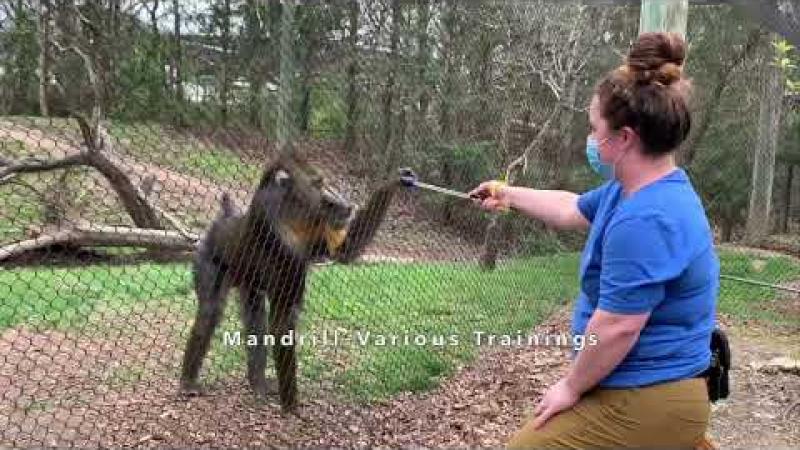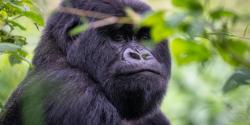At the crossroads of animal care and conservation, few places exemplify these ideals as profoundly as the Columbus Zoo and Aquarium. A vital hub for education, research, and advocacy, the zoo's commitment to primate training not only enhances the lives of its inhabitants but also contributes significantly to broader conservation efforts.
Let's dive into primate training at the Zoo!
- One of the easiest ways for our Animal Care staff to monitor the welfare and health of the primates is through regular weight checks. With many species of primates, their tails can have a huge impact on their weight. (This can cause it to fluctuate no matter if their tail is on or off the scale.) Our Animal Programs team decided to train ring-tailed lemur, King Julian, to hold his tail when he gets on the scale to help provide a more accurate and consistent weight. The cool part is that it was an easy behavior to train because ring-tailed lemurs naturally will rub their wrists on their tails when they engage in stink fights!
- The great apes in our care also willingly participate in their health care. Our keepers work hard with orangutans, Khali, Sulango, and Dumplin, to ensure that behaviors, such as opening their mouths for dental checks, presenting their nails for nail trims, and presenting their forehead for temperature taking, can be done voluntarily. One behavior that keepers have utilized well with the recent orangutan habitat renovation is using a laser pointer for target training. The orangutans know that they have to walk, reach, or climb to find the laser point and then touch it to receive a reward. This behavior is an impressive way to witness the unique way an orangutan moves around its habitat while also acting as a way to help with exercise and weight loss.
- Sometimes, invasive procedures arise, and our keeper staff works hard to prepare the primates for those situations. Just like humans, bonobos can suffer from cardiac disease. Our Congo Expedition team worked with bonobo, Maiko, to get him to present his chest and hold so that they could work with a human sonographer to do a voluntary cardiac study. This is a great testament to teamwork as our keepers focus on keeping Maiko happy while maneuvering the probe so the sonographer can get a clear picture of the heart. It has been invaluable as the apes begin to age and monitoring their heart health becomes more routine.
- A rewarding part of the keepers’ job is watching the animals become parents and seeing their offspring learn new behaviors. Our Australia and the Islands team has experienced this, as they have begun training juvenile siamang, Tamarack. Like young humans, young primates have a lot of energy and short attention spans. Keepers have to work to keep sessions short so that Tamarack stays engaged the entire time. His eagerness to try new things has led to him learning new behaviors, such as the “upside-down” behavior you see in the video, which is something the other gibbons and siamangs don’t know. Tamarack is very smart and is quickly joining his parents in knowing a list of other behaviors such as “hand,” “back,” and “hip,” which will allow keepers to administer his yearly vaccines voluntarily.
Thanks for joining us for our primate-focused Training Tales! But the training at the Zoo doesn’t stop here–we still have a lot more behaviors to show. Be sure to stop back again in July to see what else these incredible animals can do.











